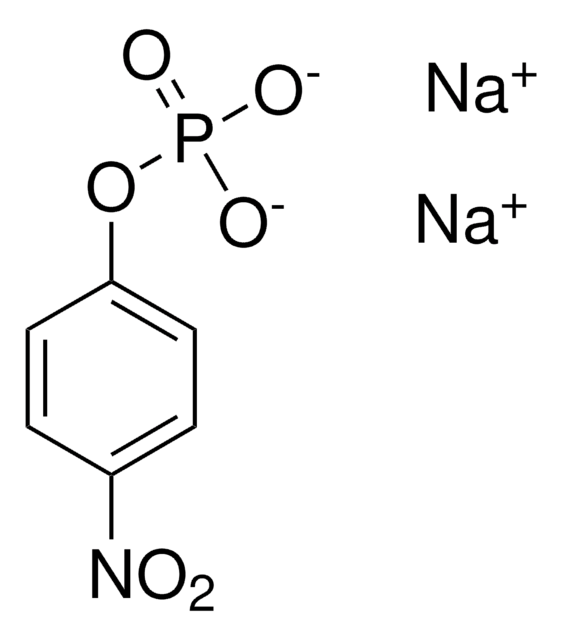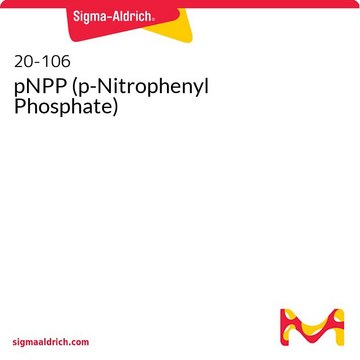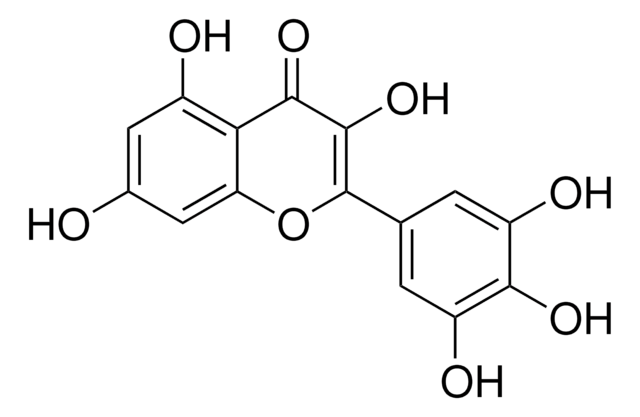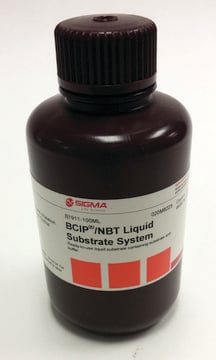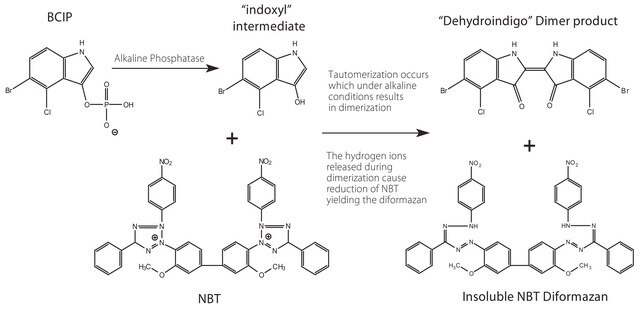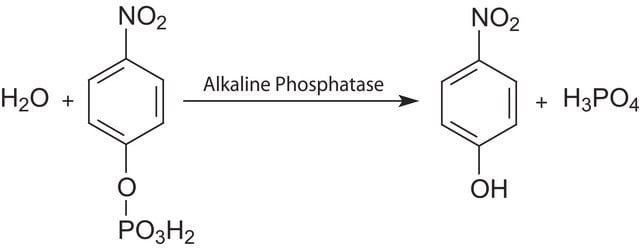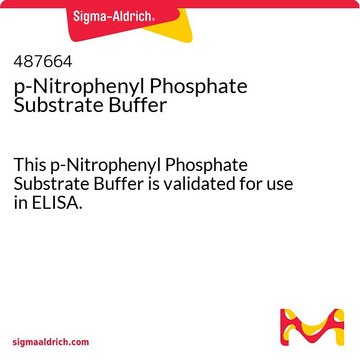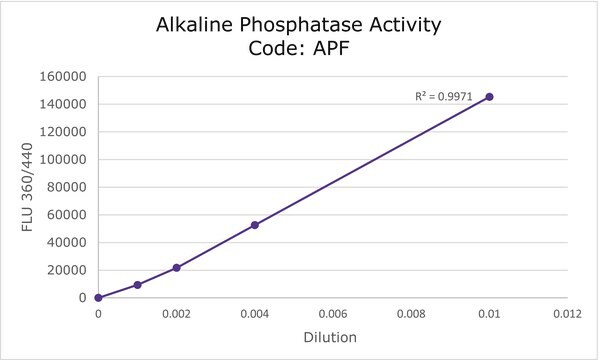P7998
Alkaline Phosphatase Yellow
alkaline phosphatase substrate, chromogenic liquid
Synonym(s):
Alkaline phosphatase substrate solution (pNPP)
About This Item
Recommended Products
Product Name
Alkaline Phosphatase Yellow (pNPP) Liquid Substrate System for ELISA, ready to use solution
Quality Level
form
liquid
storage temp.
2-8°C
General description
Application
Caution
Physical form
Preparation Note
signalword
Danger
hcodes
Hazard Classifications
Eye Dam. 1 - Skin Irrit. 2 - STOT RE 2
Storage Class
10 - Combustible liquids
wgk_germany
WGK 3
flash_point_f
Not applicable
flash_point_c
Not applicable
Choose from one of the most recent versions:
Already Own This Product?
Find documentation for the products that you have recently purchased in the Document Library.
Customers Also Viewed
Articles
Nitroblue Tetrazolium (NBT) is used with the alkaline phosphatase substrate 5-Bromo- 4-Chloro-3-Indolyl Phosphate (BCIP) in western blotting and immunohistological staining procedures. These substrate systems produce an insoluble NBT diformazan end product that is blue to purple in color and can be observed visually.
Our team of scientists has experience in all areas of research including Life Science, Material Science, Chemical Synthesis, Chromatography, Analytical and many others.
Contact Technical Service